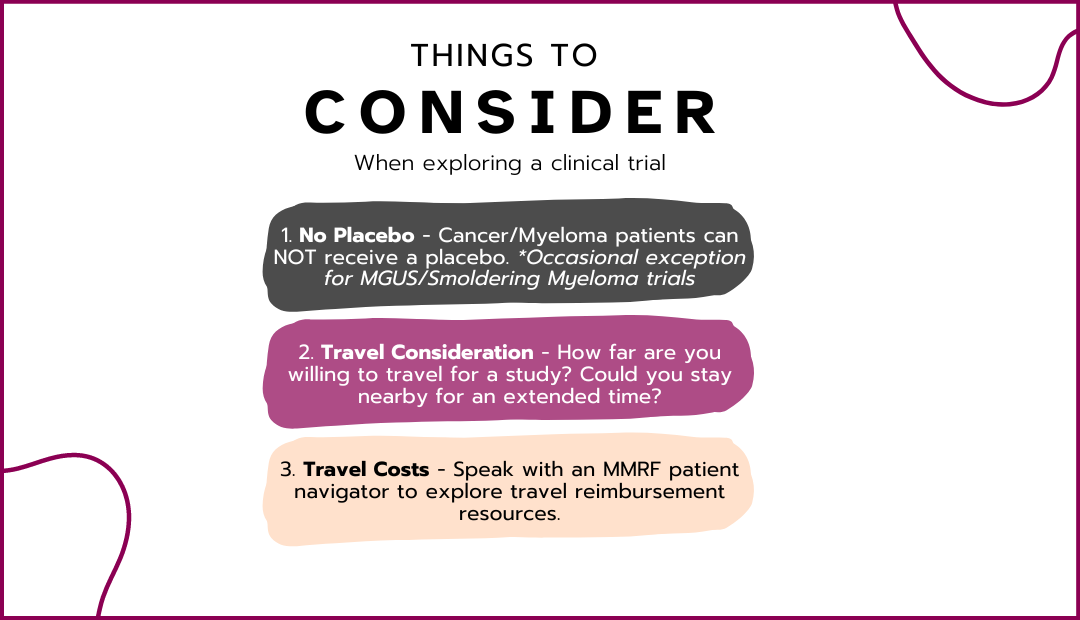Optimizing PTCy Dose and Timing
NCT03983850
Age 12 - 120
Sex Both
Phase Phase 1, Phase 2
Third Opinion Trial Synopsis
In this clinical study, researchers are exploring a new treatment approach for patients with a specific type of blood cancer. The study focuses on using a combination of therapies to improve patient outcomes. Here are some key points about the study:
- The treatment involves a unique combination of existing therapies, which may enhance effectiveness compared to standard treatments.
- Patients will receive the treatment in a controlled environment, allowing researchers to closely monitor its effects and side effects.
- The study aims to determine how well this combination works in reducing symptoms and improving quality of life for patients.
- Participants will be closely followed over time to assess the long-term benefits and any potential risks associated with the treatment.
- This study is significant because it may provide new insights into more effective treatment options for patients who have not responded well to current therapies.
Third Opinion AI Generated Synopsis
Trial Summary
Background: Stem cell or bone marrow transplants can cure or control blood cancers. Sometimes the donor cells see the recipient's body as foreign. This can cause complications. A high dose of the drug cyclophosphamide (PTCy) can help reduce these risks. Researchers want to see if a lower dose of PTCy can have the same benefits. Based on encouraging results from the first part of the study, researchers now are investigating whether a lower dose of PTCy can allow other immunosuppression to be decreased. Objective: To see if a lower dose of PTCy and now also shorter duration of another immunosuppressant called mycophenolate mofetil will help people with blood cancers have a more successful transplant and fewer side effects. Eligibility: People ages 15-65 with leukemia, lymphoma, or multiple myeloma that is not curable with standard therapy and is at high risk of returning without transplant, and their healthy adult relatives Design: Transplant participants will be screened with: Blood, urine, breathing, and heart tests Scans Chest x-ray Bone marrow samples: A needle inserted into the participant s pelvis will remove marrow and a bone fragment. Transplant recipients will stay at the hospital and be prepped with chemotherapy over 6 days for the transplant. They will get stem cells through a catheter in the chest or neck. They will get the cyclophosphamide chemotherapy. They will stay in the hospital about 4 more weeks. They will have blood transfusions. They will have frequent blood tests and 2 bone marrow samples within 1 year after the transplant. Donor participants will be screened with: Blood, urine, and heart tests Chest x-ray Scans Donor participants will have bone marrow taken from their pelvis or stem cells taken from their blood. For the blood donation, blood will be taken from a vein in one arm, move through a machine to remove white blood cells, and be returned through a vein in the other arm. Participation will last up to 5 years....
Background: Stem cell or bone marrow transplants can cure or control blood cancers. Sometimes the donor cells see the recipient's body as foreign. This can cause complications. A high dose of the drug cyclophosphamide (PTCy) can help reduce these risks. Researchers want to see if a lower dose of PTCy can have the same benefits. Based on encouraging results from the first part of the study, researchers now are investigating whether a lower dose of PTCy can allow other immunosuppression to be decreased. Objective: To see if a lower dose of PTCy and now also shorter duration of another immunosuppressant called mycophenolate mofetil will help people with blood cancers have a more successful transplant and fewer side effects. Eligibility: People ages 15-65 with leukemia, lymphoma, or multiple myeloma that is not curable with standard therapy and is at high risk of returning without transplant, and their healthy adult relatives Design: Transplant participants will be screened with: Blood, urine, breathing, and heart tests Scans Chest x-ray Bone marrow samples: A needle inserted into the participant s pelvis will remove marrow and a bone fragment. Transplant recipients will stay at the hospital and be prepped with chemotherapy over 6 days for the transplant. They will get stem cells through a catheter in the chest or neck. They will get the cyclophosphamide chemotherapy. They will stay in the hospital about 4 more weeks. They will have blood transfusions. They will have frequent blood tests and 2 bone marrow samples within 1 year after the transplant. Donor participants will be screened with: Blood, urine, and heart tests Chest x-ray Scans Donor participants will have bone marrow taken from their pelvis or stem cells taken from their blood. For the blood donation, blood will be taken from a vein in one arm, move through a machine to remove white blood cells, and be returned through a vein in the other arm. Participation will last up to 5 years....
from ClinicalTrials.gov
Locations & Contact
Fill out the form and to let the Multiple Myeloma Research Foundation know you are interested in this trial.
Contacts:

